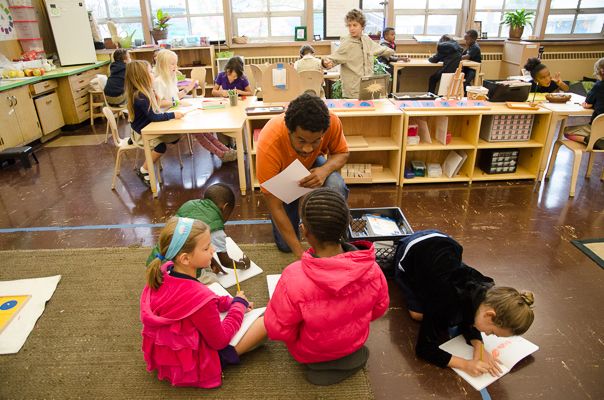State auditor will review how $30 billion in Local Control Funding Formula grant money was spent
by Chris Reed | October 17, 2019 4:42 pm

New reports show that six years after Gov. Jerry Brown and the Legislature approved a sweeping overhaul[1] in how school funds were divvied up, the evidence is mixed that the overhaul is accomplishing its main goal: improving the academic performance of the 1.2 million English language learners in California public schools.
Under the law, known as the Local Control Funding Formula, schools with high percentages of English learners, foster children and poor families get additional funding that in 2013 was described as being specifically to help these students achieve proficiency in key subjects. Since then, about $30 billion in LCFF grants have been distributed.
But a 2015 decision by then-Superintendent of Public Instruction Tom Torlakson to allow LCFF dollars to go for teacher raises[2] and other general uses has led to critics such as Assemblywoman Shirley Weber, D-San Diego, arguing that struggling students aren’t getting the help they were promised in 2013. Earlier this year, Weber persuaded a legislative panel to have state Auditor Elaine Howle review how the grants are being spent and possibly examine their effectiveness.
Reformers see bad faith in how law was implemented
The pending audit is highly anticipated by education reform groups which have for years accused the state government of showing bad faith in implementing LCFF.
Defenders of the law have some data that back up claims it is working as intended. An EdSource analysis[3] of the state’s Smarter Balanced test scores released earlier this month showed that schools with high numbers of LCFF students had seen a 9 percent increase in student English proficiency over the last five years. But the same analysis showed little change in the “achievement gap” between white and Asian students and those of Latino and African American descent.
And a Public Policy Institute of California report[4] released in August found that increased funding hadn’t changed a fundamental problem that makes progress difficult in struggling schools: They still had teachers who were considerably less experienced than those in wealthier communities. These schools are also far more likely to have teachers offering instruction in fields in which they had no training[5]. The PPIC suggested there was evidence that these issues had gotten worse in recent years.
Because of strong teacher job-protection laws, veteran teachers have considerable latitude about where they work. Schools in wealthy communities that often get help from parental and community fundraisers have a huge edge over schools in poor communities where teachers often feel they have no choice but to bring in basic supplies for students from destitute families.
Civil rights lawyers again target LAUSD over spending
Meanwhile, in Los Angeles Unified, the state’s largest school district, a formal complaint[6] has been filed by the Public Advocates civil rights law firm that alleges that much of the $1 billion-plus in LCFF money the district gets annually is being used in ways that are not properly documented as required by state law. The complaint includes numerous examples from district records of LCFF grants being spent in questionable ways.
In 2016, Public Advocates filed a similar complaint against L.A. Unified, which some district officials strongly disputed. But the next year, the district agreed to provide an additional $151 million[7] to 50 schools with high concentrations of English learners, foster children and students from poor families.
- overhaul: https://www.cde.ca.gov/fg/aa/lc/lcffoverview.asp
- teacher raises: https://edsource.org/2015/torlakson-reinterprets-departments-stance-on-teacher-raises/81528
- analysis: https://edsource.org/2019/slow-growth-big-disparities-after-5-years-of-smarter-balanced-tests/618328
- report: https://www.ppic.org/publication/school-resources-and-the-local-control-funding-formula-is-increased-spending-reaching-high-need-students/
- had no training: https://edsource.org/2018/californias-persistent-teacher-shortage-fueled-by-attrition-high-demand-say-newly-released-studies/602654
- complaint: https://assets.documentcloud.org/documents/6425682/Public-Advocates-LCAP-Complaint-Against-LAUSD.pdf
- $151 million: https://www.scpr.org/news/2017/09/14/75626/lausd-settles-legal-case-that-cut-to-the-core-of-h/
Source URL: https://calwatchdog.com/2019/10/17/state-auditor-will-review-how-30-billion-in-local-control-funding-formula-grant-money-was-spent/